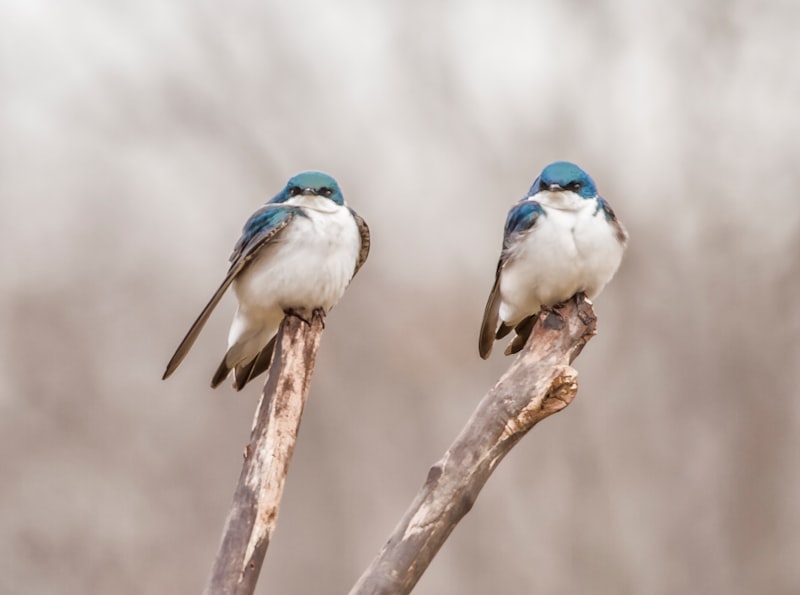Birds of prey, majestic and awe-inspiring creatures, face numerous challenges in today’s world. These magnificent hunters play a crucial role in ecosystems, yet their populations often suffer due to human activities and environmental changes.
One of the primary challenges these birds face is habitat loss. As human development expands, their natural habitats shrink, leaving them with fewer places to hunt and nest. This loss of habitat not only affects their immediate survival but also disrupts entire food chains that rely on their presence.
Another significant threat is illegal hunting and poaching. Despite protective measures in many countries, birds of prey are still targeted for their feathers, talons, and even for sport. This illegal activity not only decimates their numbers but also undermines conservation efforts aimed at their protection.
Pollution poses yet another critical challenge. Pesticides and pollutants introduced into the environment accumulate in the food chain, affecting birds of prey at the top. These substances weaken their immune systems, reduce breeding success, and even lead to population decline.
Despite these challenges, there have been notable successes in bird of prey conservation. Conservation organizations and wildlife reserves work tirelessly to rehabilitate injured birds, protect nesting sites, and raise public awareness about their plight. Legal protections and international agreements also play a crucial role in safeguarding these magnificent creatures.
In some regions, reintroduction programs have been successful in restoring populations of endangered species. By carefully monitoring and supporting these efforts, conservationists aim to ensure a future where birds of prey can thrive once again in their natural habitats.
The journey to conserve birds of prey is ongoing and requires collective efforts from governments, organizations, and individuals worldwide. By understanding the challenges they face and celebrating successes in their conservation, we can contribute to preserving these remarkable predators for future generations to admire and cherish.
Rising Threats and Resilient Solutions: Safeguarding Birds of Prey
Imagine the awe-inspiring sight of a bald eagle swooping down from the sky, its keen eyes focused on its prey below. These predators play a crucial role in maintaining ecological balance by controlling prey populations and signaling the health of their habitats. However, their populations are increasingly vulnerable to habitat loss, pollution, and illegal hunting.

But amidst these challenges, there is hope. Conservationists and wildlife enthusiasts alike are rallying to protect birds of prey through various initiatives. One such initiative involves the establishment of protected areas and wildlife reserves where these birds can thrive undisturbed. By preserving their natural habitats, we not only ensure their survival but also safeguard the intricate ecosystems they support.
Moreover, technological advancements are revolutionizing conservation efforts. Tracking devices and satellite telemetry are now used to monitor the movements and behaviors of these birds in real-time. This data is invaluable in identifying migration patterns, understanding their habitat preferences, and mitigating potential threats.
Yet, the battle is far from over. Climate change continues to alter landscapes and disrupt traditional breeding grounds for many species of birds of prey. As temperatures rise and weather patterns shift, adaptation becomes crucial for their survival. Conservationists are actively researching climate-resilient strategies to help these birds withstand the challenges posed by a changing climate.
While birds of prey face unprecedented challenges in the modern world, there are concerted efforts to protect and conserve them. By combining traditional conservation practices with innovative technologies and climate-smart strategies, we can ensure that these magnificent creatures continue to grace our skies for generations to come. Their resilience reminds us of the importance of preserving biodiversity and our interconnectedness with nature.
From Peril to Protection: The Global Effort to Save Birds of Prey
Birds of prey, majestic and fierce, have long captivated our imaginations with their aerial prowess and hunting skills. However, these iconic predators face a perilous future due to habitat loss, illegal hunting, and environmental pollution. The global conservation community has rallied to protect these vital species, recognizing their ecological importance and cultural significance.
One of the most pressing threats to birds of prey is habitat destruction. As human populations expand and land use changes, nesting sites and hunting grounds vital to these birds diminish. Deforestation, urbanization, and agricultural expansion have drastically altered landscapes, leaving many species without suitable habitats.
Illegal hunting and poaching further exacerbate the challenges faced by birds of prey. Despite legal protections in many countries, these birds are often targeted for their feathers, body parts, or perceived threat to livestock. The demand for exotic pets and traditional medicine drives a lucrative black market trade that threatens numerous species with extinction.
Environmental pollution, particularly pesticides and lead poisoning from contaminated prey, poses another significant threat. Birds of prey, high in the food chain, accumulate toxic substances that weaken their immune systems and reproductive capabilities. Efforts to mitigate pollution and promote sustainable agricultural practices are critical to safeguarding their future.
In response to these challenges, conservationists, governments, and local communities have launched concerted efforts to protect birds of prey. Conservation initiatives range from habitat restoration and captive breeding programs to public awareness campaigns and legislative advocacy. By engaging communities in bird monitoring and habitat conservation, these efforts aim to ensure a future where birds of prey thrive in their natural environments.
The journey from peril to protection for birds of prey requires sustained commitment and collaboration across borders. Through collective action and innovative conservation strategies, we can secure a safer and more sustainable future for these magnificent birds, preserving their role in ecosystems and cultural heritage for generations to come.
Flight Against Extinction: Conservation Triumphs for Birds of Prey
Enter the dedicated efforts of conservationists worldwide. Through relentless advocacy and hands-on conservation initiatives, significant strides have been made in reversing the decline of birds of prey. These efforts encompass a multifaceted approach, ranging from habitat restoration projects to breeding programs aimed at bolstering dwindling populations.
One notable success story involves the Peregrine Falcon, a species once on the brink of extinction due to the widespread use of pesticides like DDT. The banning of DDT and subsequent conservation measures have enabled Peregrine Falcons to reclaim their skies, symbolizing the resilience of nature when given a chance to rebound.

Moreover, collaborative conservation efforts have proven instrumental in protecting other iconic raptors such as the Bald Eagle and the California Condor. By addressing key threats and implementing conservation strategies rooted in scientific research, these species have seen remarkable recoveries, offering hope for their long-term survival.
The journey towards securing a future for birds of prey is not without its challenges. Climate change poses new threats, altering habitats and migration patterns. Despite these obstacles, ongoing conservation endeavors continue to innovate and adapt, ensuring that these apex predators remain a vital part of our ecosystems for generations to come.
The fight against extinction for birds of prey stands as a testament to the power of collective action and environmental stewardship. As we celebrate these conservation triumphs, we are reminded of our responsibility to safeguard biodiversity and preserve the natural world that sustains us all.
Hunting for Hope: Success Stories in Birds of Prey Conservation
In the realm of wildlife conservation, few endeavors are as compelling and crucial as the preservation of birds of prey. These majestic creatures, ranging from eagles soaring in the skies to kestrels hovering over fields, face numerous threats in the modern world. However, amidst the challenges, there are shining examples of successful conservation efforts that inspire hope and showcase the power of dedicated conservationists.
One such success story revolves around the Peregrine Falcon, once on the brink of extinction due to pesticide use in the mid-20th century. Through concerted conservation efforts, including captive breeding programs and the banning of harmful chemicals like DDT, populations of this iconic bird have rebounded significantly across North America and Europe. Today, sightings of Peregrine Falcons nesting in urban areas serve as a testament to the resilience of these birds and the effectiveness of conservation initiatives.
Another inspiring tale comes from the Bald Eagle, a symbol of strength and freedom in North America. Hunted and poisoned to near extinction, the Bald Eagle has made a remarkable recovery thanks to legal protections, habitat conservation, and public awareness campaigns. From just a few hundred pairs in the lower 48 states in the 1960s, the population has rebounded to over 10,000 pairs today, showcasing the power of legislative action and grassroots efforts in wildlife conservation.
In Africa, the success story of the Martial Eagle highlights community-based conservation initiatives. Facing threats from habitat loss and persecution, local communities in South Africa have collaborated with conservationists to protect nesting sites and educate the public about the importance of these apex predators. As a result, populations of Martial Eagles have stabilized in certain regions, demonstrating the vital role of community engagement in safeguarding biodiversity.
These stories of resilience and recovery in birds of prey conservation underscore the importance of proactive measures in preserving our natural heritage. By celebrating these successes and learning from past challenges, we can continue to foster a future where birds of prey thrive alongside human populations, ensuring a balanced and biodiverse planet for generations to come.
Frequently Asked Questions
What are the main threats facing birds of prey today?
Learn about the primary threats facing birds of prey today, including habitat loss, illegal hunting and trapping, pollution, and collisions with man-made structures. Understand how these factors impact their populations and what conservation efforts are being undertaken to protect these majestic birds.
Which bird of prey species have shown successful recovery efforts?
Discover which bird of prey species have successfully recovered through dedicated conservation efforts. Learn about the species that have made remarkable progress in population growth and habitat restoration.
How do conservation efforts protect endangered raptor species?
Learn how conservation efforts safeguard endangered raptor species through habitat preservation, captive breeding programs, and education initiatives.
How can individuals contribute to the conservation of birds of prey?
Learn how individuals can actively contribute to the conservation of birds of prey through simple actions such as supporting local conservation organizations, advocating for habitat preservation, reducing pesticide use, and raising awareness in their communities.
What role do rehabilitation centers play in bird of prey conservation?
Rehabilitation centers for birds of prey play a crucial role in conservation efforts by providing medical care, rehabilitation, and often releasing injured or orphaned birds back into the wild. They contribute to population sustainability and species diversity through rescue, treatment, and education programs.


